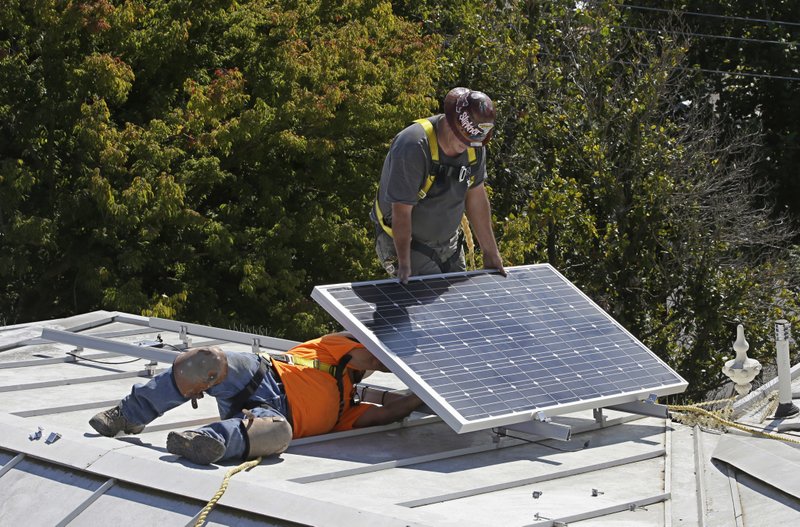A Canadian research team thinks they may have figured out how to make solar panels work effectively on cloudy days — with a little help from some of nature’s most misunderstood bacteria.

The group from the University of British Columbia relied on none other than E. coli to test the effectiveness of a new approach to solar panels, one that works using compounds found all around us.
“On a day like today in Vancouver, where it’s overcast, these things will perform quite well compared to the conventional solar cells,” said lead researcher Vikramaditya Yadav, a professor in UBC’s department of chemical and biological engineering.
WATCH: UBC researchers may have new solar power breakthrough

The key to the new tech lies in the bacteria’s ability to naturally convert sunlight into energy. Another group of researchers had the same idea three decades ago in California, Yadav said, but they went about it a bit differently.
They began extracting naturally-occurring pigments (or dyes) from plants — like spinach leaves — then combined those dyes with conducting materials to tap into their electricity-producing potential. But that took time, money and chemical intervention.

Get daily National news
READ MORE: Vancouver Island man shows off his solar house and his electricity savings
“What we did is we said … ‘can we further improve the process? Namely, can we make synthesis cheap? Can we avoid the use of chemicals? Can we make everything more sustainable?’” Yadav said.
The answer was yes. The UBC team, made up of scientists from a variety of backgrounds, simply left the dye where it was instead of trying to extract it, and engineered E. coli bacteria to produce a lot more of it.
They then coated the bacteria with metallic nano-particles, and introduced the whole package into an electrode.
“Now, the (solar panel) is using engineered bacteria which is making a dye which is normally made by plants,” Yadav said.
The problem is that the bacteria is finite, and so is the dye (called lycopene) it produces. Eventually, the supply runs out, so trying to sustain the production of the dyes for as long as possible is the next hurdle, according to Yadav.
WATCH: Alberta sees uptick of solar systems in last 12 months

While E. coli is often associated with serious, food-borne illnesses, the solar panel user would never come into contact with it. Even if they did, the bacteria actually wouldn’t be dangerous once it was introduced into the electrode, Yadav explained.
“It makes the dye, and then it essentially becomes like a fossil. It’s encased in this coating of metal.”
More work ahead
The team recognizes that this is just a first step, he added, and there are years of work ahead before their invention can be successfully marketed for widespread use.
While the technology could be a viable competitor to conventional solar panels, especially in cloudy regions of the globe, Yadav actually sees the two as complimentary.
“Where it can really blossom is when you’re looking at electronics for low-light conditions,” he said.
There may be applications for mining, for example, where a lot of equipment and sensors need to be powered below ground.
READ MORE: How making your home energy efficient can save you big this summer
More than anything, Yadav said the project taught him the value of collaborating across different scientific fields. His own expertise is in biochemical engineering, but there were people on the team with backgrounds in material science, as well as electro-chemists.
“This would not have been possible if we didn’t have people from different disciplines talking to one another and asking basic questions,” he said.
“If any one of us had said ‘look, I’m going to be an ivory tower by myself, let’s just be siloed’ … this probably would not have seen the light of day. No pun intended.”








Comments